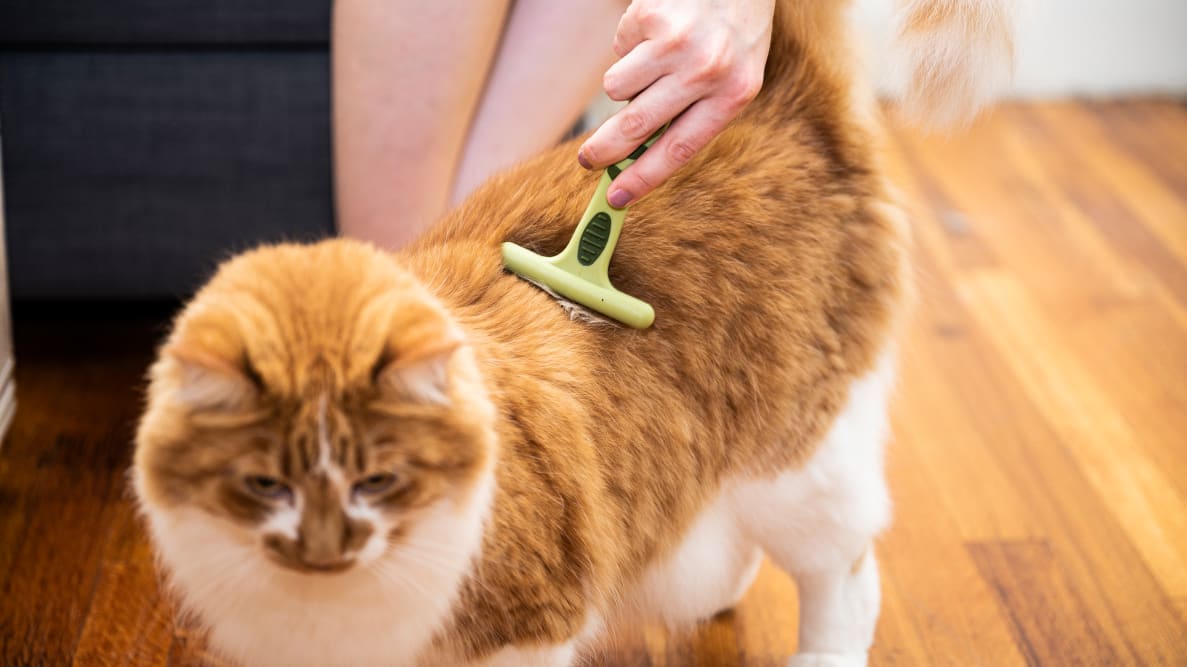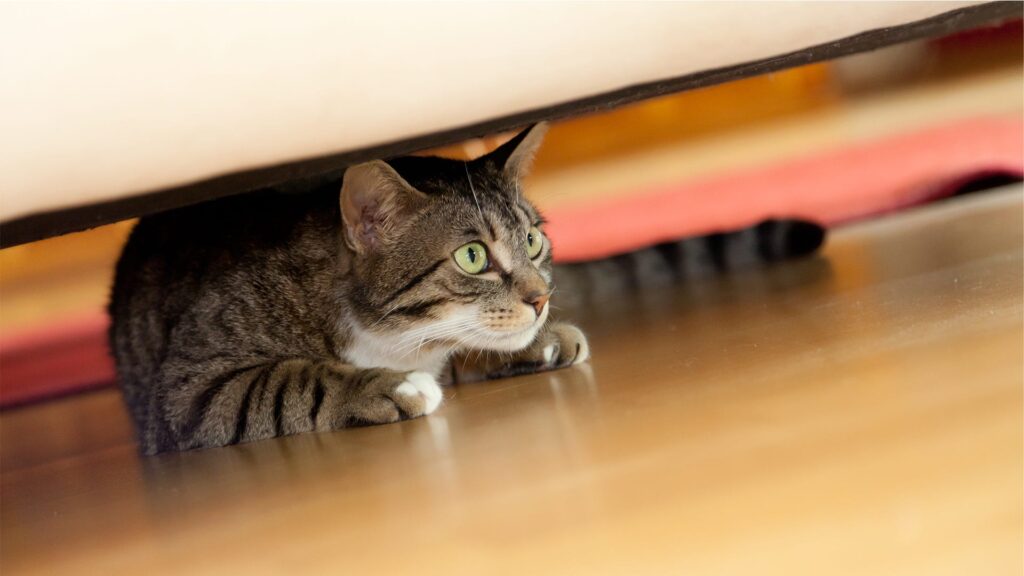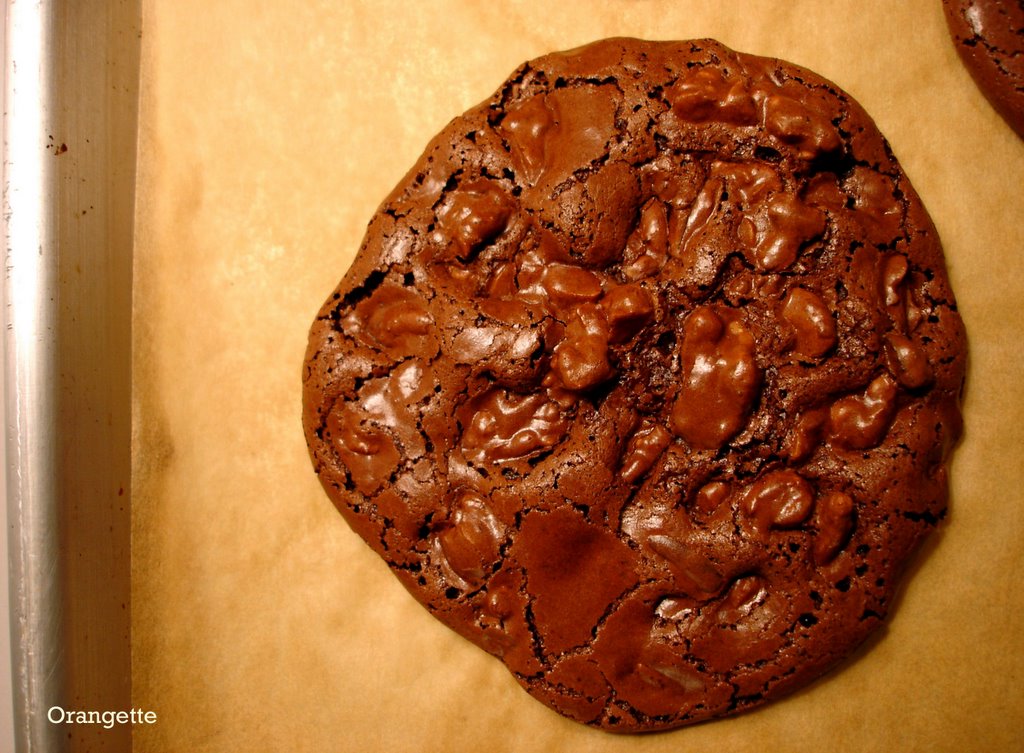Cats with undercoats require proper care to maintain their coat health and prevent matting. We’ll explore what undercoats are and provide tips on how to take care of them effectively.
Understanding how to care for your cat’s undercoat is essential for keeping their fur clean and tangle-free. Let’s dive into the details!

Credit: reviewed.usatoday.com
Contents
- 1 What Are Undercoats In Cats?
- 2 Identifying Cats With Undercoats
- 3 Caring For Cats With Undercoats
- 4 Dealing With Shedding In Cats With Undercoats
- 5 Preventing Matting And Tangles In Undercoated Cats
- 6 Seasonal Shedding And Undercoated Cats
- 7 Addressing Common Skin And Coat Problems In Undercoated Cats
- 8 Professional Grooming Vs. At-home Grooming For Undercoated Cats
- 9 Bonding With Undercoated Cats Through Grooming
- 10 Frequently Asked Questions On Cats With Undercoats: What Is It And How To Take Care Of It
- 11 Conclusion
What Are Undercoats In Cats?
Cats with undercoats have an additional layer of fur that lies beneath their topcoat. The undercoat typically consists of soft, dense fur and serves several important purposes. It provides insulation, keeping the cat warm in colder temperatures, and helps to regulate their body temperature. The undercoat also acts as a natural protective layer against environmental elements such as rain and wind.
As for the characteristics, undercoats can vary in thickness and length depending on the breed of the cat. Typically, long-haired cats have more prominent undercoats compared to short-haired ones. These undercoats can be more prone to matting and tangling if not properly cared for.
Understanding the significance of undercoats is crucial when it comes to taking care of cats. Regular grooming is essential in maintaining a healthy undercoat, which involves brushing to remove any loose fur and prevent matting. If neglected, matting can lead to discomfort and potentially skin issues for the feline. Additionally, the use of appropriate grooming tools such as slicker brushes and combs specially designed for undercoats can make the process more effective.
Identifying Cats With Undercoats
Identifying cats with undercoats is essential for proper grooming and maintenance. While not all cats have undercoats, certain breeds are more likely to possess this additional layer of fur. Some of the common cat breeds that tend to have undercoats include Maine Coons, Norwegian Forest Cats, and Siberian Cats.
There are several signs that can help you identify if your cat has an undercoat. One way is by observing the thickness and density of their fur. Cats with undercoats often have a downy layer of soft fur close to their skin, which provides insulation and protection against the elements. Another sign to look for is excessive shedding, especially during seasonal changes. Cats with undercoats tend to shed more as their undercoat transitions with the weather.
Grooming cats with undercoats requires special attention. Regular brushing helps to remove loose fur, preventing matting and tangling. It also helps distribute natural oils and maintain the health of the fur. Additionally, engaging in grooming practices, such as bathing and using specialized grooming tools, can further enhance the care of cats with undercoats.
Caring For Cats With Undercoats
Regular grooming is essential for cats with undercoats to maintain their fur health and prevent matting. Brushing and combing are effective techniques to remove loose hair, distribute natural oils, and stimulate blood circulation. Use a slicker brush and a wide-toothed comb suitable for your cat’s hair length. Start from the head and work your way down the body, ensuring gentle brushing to avoid causing discomfort. Pay extra attention to areas prone to matting, such as the belly and armpits. Comb carefully to remove any tangles or mats found.
Bathing cats with undercoats requires special considerations. Use a cat-friendly shampoo and lukewarm water. Ensure the coat is well-brushed before bathing to minimize matting. Avoid soaking the undercoat too much and rinse thoroughly to remove all traces of shampoo. After bathing, gently towel-dry the cat and avoid using a hairdryer as it may cause the undercoat to tangle. Regular grooming sessions and maintaining a healthy diet will also contribute to the overall health of cats with undercoats.
Dealing With Shedding In Cats With Undercoats
Understanding the shedding cycle is crucial when it comes to managing the shedding of cats with undercoats. These cats have a dense layer of fur beneath their outer coat, which provides insulation and protection. Shedding occurs as the air temperature changes and the cat’s body adapts to the environment, resulting in fur that needs to be shed to maintain a healthy coat.
To minimize shedding in undercoated cats, it’s essential to use the right tools and brushes. Regular grooming helps to remove loose hairs and prevent them from spreading throughout the house. Consider using a deshedding tool specifically designed for undercoated cats, as it can effectively remove the excess fur without harming the cat’s skin.
When brushing your cat, focus on the areas prone to matting, such as the belly and armpits. Gentle, regular brushing not only helps to minimize shedding but also promotes good blood circulation and a healthy coat.
| Methods to minimize shedding in undercoated cats: | Using tools and brushes to manage shedding: |
|---|---|
| – Regular grooming | – Deshedding tool |
| – Focusing on mat-prone areas | – Gentle, regular brushing |
Preventing Matting And Tangles In Undercoated Cats
Cats With Undercoats: What Is It And How To Take Care Of It
Techniques To Prevent Matting And Tangles In Undercoats |
| Importance of regular grooming to prevent matting |
| Maintaining a regular grooming routine is essential to prevent matting and tangles in cats with undercoats. Regular brushing helps to remove loose hair and prevent it from becoming trapped in the undercoat. Using a slicker brush with fine bristles is highly effective in reaching the undercoat without causing any discomfort to your cat. |
| Trimming techniques for undercoat maintenance |
| Regular trimming can also help to prevent matting and tangles in undercoated cats. Trimming the fur around the ears and armpits, as well as the fur on the belly and back legs, can reduce the likelihood of matting in these areas. It is important to use caution when trimming, as cats have sensitive skin. |
By following these techniques and ensuring regular grooming, you can keep your cat’s undercoat healthy and prevent matting and tangles. It is important to create a positive grooming experience for your cat and to seek professional help if needed.
Seasonal Shedding And Undercoated Cats
Seasonal shedding can be a challenge for owners of undercoated cats. Undercoats are an extra layer of fur that some cats possess, and they play a crucial role in temperature regulation. During shedding seasons, undercoated cats go through a natural process of shedding their winter coats in preparation for the warmer months.
Undercoated cats have a higher propensity to shed during seasonal changes. This shedding process is essential for their comfort and well-being. It helps to remove excess hair and regulate body temperature. However, it can lead to increased shedding around the house.
- Regular grooming: Brush your undercoated cat at least once a week to remove loose and dead hair. This will help minimize shedding around the house.
- Healthy diet: Feed your cat a balanced diet with essential nutrients to promote healthy skin and coat. Consult your veterinarian for specific dietary recommendations.
- Keep the environment clean: Regularly vacuum and clean your home to remove loose fur. This will prevent excessive shedding from accumulating in your living space.
- Extra grooming sessions: Increase the frequency of grooming sessions during shedding seasons to keep the undercoat under control.
- Consider professional grooming: If you find it challenging to manage your cat’s shedding, consider seeking professional grooming services.
- Provide a comfortable environment: Ensure your cat has access to cool and shaded areas during warmer months. This will help prevent overheating and excessive shedding.
Addressing Common Skin And Coat Problems In Undercoated Cats
Addressing common skin and coat problems in undercoated cats:
Undercoated cats can often experience skin irritations and other coat problems. It is important for cat owners to identify and treat these issues to ensure their feline friends remain healthy and comfortable. Regular grooming and proper hygiene practices are essential for managing undercoat-related problems.
Identifying and treating skin irritations in undercoated cats:
Look out for signs of skin irritations such as excessive scratching, redness, or flaky patches. If any issues arise, consult your veterinarian for a proper diagnosis and suitable treatment plan. Regular brushing not only helps to remove loose hair and prevent matting, but it also promotes healthier skin and coat. Invest in high-quality grooming tools designed specifically for undercoated cats.
Tips for maintaining a healthy coat in cats with undercoats:
- Regular brushing to remove loose hair and prevent matting.
- Provide a balanced diet rich in essential nutrients such as omega-3 fatty acids, which contribute to skin and coat health.
- Ensure your cat stays hydrated by providing fresh water at all times.
- Avoid over-bathing your cat, as this can strip the natural oils from their skin and cause dryness.
- Monitor your cat’s behavior and health closely to detect any changes in their skin or coat, and consult your veterinarian if necessary.
Dietary considerations for skin and coat health in undercoated cats:
Feeding a high-quality cat food that contains essential nutrients like omega-3 fatty acids can help promote a healthy coat. Look for formulas specifically formulated for skin and coat health. Additionally, incorporating wet food into your cat’s diet can provide added hydration. Consult your veterinarian for specific dietary recommendations based on your cat’s needs. Remember, a healthy diet plays a crucial role in maintaining the overall health and condition of your cat’s skin and coat.
Professional Grooming Vs. At-home Grooming For Undercoated Cats
Undercoated cats often require special attention when it comes to grooming. While professional grooming services can provide a thorough and efficient grooming experience, there are pros and cons to consider. Professional grooming offers expertise and specialized tools, ensuring a high level of grooming quality. Additionally, groomers can identify any potential skin issues or parasites that may require medical attention. However, it can be expensive and time-consuming to regularly visit a professional groomer. On the other hand, establishing a grooming routine at home can be a cost-effective alternative. Regular brushing helps to remove loose hair and prevents matting. It also allows you to monitor your cat’s skin and coat health closely. However, at-home grooming may not be as thorough as professional grooming, and it may be challenging to handle undercoated cat breeds. If you are unsure about your grooming skills or if your cat has severe matting or skin issues, seeking professional grooming assistance is recommended. By understanding the pros and cons of both professional grooming and at-home grooming, you can make an informed decision on how to best take care of your undercoated cat’s grooming needs.
Bonding With Undercoated Cats Through Grooming
Grooming is not only essential for maintaining the hygiene of your undercoated cat, but it also serves as an excellent bonding activity. Regular grooming sessions help build trust and strengthen the bond between you and your furry friend.
When grooming your undercoated cat, it’s crucial to create a positive experience to ensure they feel comfortable and safe. Start by introducing gentle brushing sessions, gradually increasing the duration as they become more familiar with the process.
During grooming, observe your cat’s body language. Pay attention to their cues and adjust your approach accordingly. If they show signs of discomfort or stress, take a break and try again later. Remember, patience is key when building trust.
Make grooming sessions enjoyable by using reward-based techniques. Offer treats, praise, and gentle petting to reinforce positive behavior. This helps your cat associate grooming with positive experiences and makes future sessions easier.
Remember, each cat is unique, so be adaptable. Some cats may prefer certain grooming tools or techniques over others. Experiment with different brushes or combs to find what works best for your undercoated cat.
The Importance Of Grooming As A Bonding Activity |
|---|
| Grooming helps in maintaining the hygiene of your undercoated cat. |
| Regular grooming sessions build trust and strengthen the bond between you and your furry friend. |
| Create a positive experience by introducing gentle brushing sessions and incrementally increasing the duration. |
| Observe your cat’s body language during grooming and adjust your approach accordingly. |
| Use reward-based techniques such as treats, praise, and gentle petting to reinforce positive behavior. |
| Be adaptable and experiment with different grooming tools or techniques to find what works best for your undercoated cat. |
Frequently Asked Questions On Cats With Undercoats: What Is It And How To Take Care Of It
How Do You Take Care Of A Cat’s Undercoat?
To take care of a cat’s undercoat, start by gently brushing it regularly to remove loose fur and prevent matting. Use a comb or brush specifically designed for undercoat grooming. If your cat has excessive shedding, consider using a de-shedding tool.
Be gentle and patient during the process.
How Do You Take Care Of A Double Coated Cat?
To care for a double coated cat, regularly brush their fur to prevent matting and shedding. Use a wide-toothed comb or a slicker brush and be gentle. Bathing is necessary only if the cat is dirty or smells bad. Provide a balanced diet to maintain a healthy coat.
Regular vet check-ups are important for overall wellness.
Should You Brush Out Cats Undercoat?
Yes, it is important to brush out a cat’s undercoat. Regular brushing helps prevent matting, keeps their coat clean and healthy, and reduces shedding. Brushing also helps distribute natural oils, promotes blood circulation, and strengthens the bond between you and your cat.
What Is The Difference Between A Cat’s Top Coat And Undercoat?
A cat’s top coat is the outer layer of fur that protects against the elements, while the undercoat is a softer, denser layer that helps regulate body temperature. The top coat is usually longer and coarser, while the undercoat is shorter and insulating.
Conclusion
Understanding a cat’s undercoat is crucial for their overall health and well-being. By taking the necessary steps to care for their undercoat, such as regular grooming and a balanced diet, you can help prevent matting, skin issues, and excessive shedding.
Remember, a healthy undercoat leads to a happy and content feline companion. So, invest time in maintaining your cat’s undercoat to ensure they remain comfortable and gorgeous!

Katie Lindsey is a passionate cat lover and founder of Cats Solution, a comprehensive resource for all things feline. With a lifelong love for cats and extensive knowledge in their care and behavior, she provides expert advice and solutions to cat owners. Through her website, Katie fosters a supportive community where cat enthusiasts can find guidance and heartwarming stories. A dedicated advocate for animal welfare, Katie also promotes responsible pet ownership and adoption. Join her on this purr-fect journey celebrating the joy of feline companionship.



